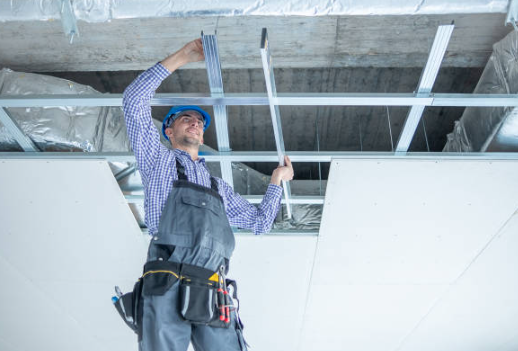
Posted on Thursday, September 26, 2024
The dry lining industry has witnessed significant innovation over the past few years, with advancements in materials, installation techniques, and manufacturing processes. As construction demands grow, so do the trends in the dry lining sector, especially with an increasing focus on efficiency, sustainability, and adaptability. Let’s explore the future trends shaping the dry lining industry and how roll forming machines are evolving to meet these demands.
One of the most significant trends in the dry lining industry is the shift towards lightweight profiles, particularly in metal framing. Lightweight profiles are not only easier to handle, but they also simplify the installation process, reducing labor costs and time on-site. Roll forming machines are critical in producing these profiles, offering precise and consistent results. With advancements in technology, manufacturers can now create thinner yet stronger profiles, meeting both structural and aesthetic needs.
Smart materials, such as those that offer improved acoustic insulation or moisture resistance, are gaining traction in the dry lining industry. These materials are designed to enhance the functionality of spaces, especially in commercial and residential buildings. As smart materials become more popular, roll forming machines will need to adapt to handle a wider range of materials, including those with unique coatings or compositions that improve performance. Roll forming technology can ensure that profiles maintain their integrity, even with these more complex materials.
Automation and artificial intelligence (AI) are making their mark in many industries, and the roll forming sector is no exception. Automated roll forming machines can now operate with minimal human intervention, significantly increasing productivity. AI, on the other hand, enables real-time quality control, optimizing the manufacturing process by identifying potential issues before they become costly problems.
With AI-driven technology, roll forming machines are becoming smarter, capable of adjusting settings based on the specific requirements of each profile. This reduces waste, improves material efficiency, and ensures that every profile meets strict industry standards.
As sustainability becomes a key focus in construction, the dry lining industry is also shifting towards more eco-friendly solutions. This includes using recycled materials and minimizing waste during production. Roll forming machines are evolving to meet these demands by incorporating energy-efficient systems and using recycled metal coils to produce sustainable profiles. This not only helps reduce the environmental impact but also lowers production costs for manufacturers.
The future of the dry lining industry is full of exciting developments, from lightweight profiles and smart materials to the integration of automation and AI. Roll forming machines play a vital role in adapting to these trends, ensuring that manufacturers can meet the ever-changing demands of the market. As technology continues to advance, the dry lining industry will see further improvements in efficiency, sustainability, and the overall quality of the products produced.
By staying ahead of these trends, companies in the dry lining sector can ensure they are ready for the next phase of innovation.

Understanding Coil IDs, Mandrel Sizing, and Shear Pin Safety in Uncoilers
Posted on Wednesday, October 1, 2025
Mismatched sizes can lead to machine damage, downtime, and safety hazards — often evidenced by a shear pin failure.

How Coil Tensile Strength Affects Roll Forming and How to Adjust Your Machine
Posted on Wednesday, October 1, 2025
Changes in tensile strength can significantly affect the finished profile, causing misaligned bends, uneven edges, and out-of-spec parts.

Why Paint Cracks on an Embossing Line Running Pre-Painted Coil and How to Prevent It
Posted on Wednesday, October 1, 2025
This issue not only affects the visual quality of the product but can also lead to increased scrap rates and customer complaints.

The Most Popular Standing Seam Metal Roof Panels in the U.S. — A Comprehensive Guide
Posted on Monday, September 29, 2025
In this post, we’ll explore what panel styles and sizes are most popular in the U.S